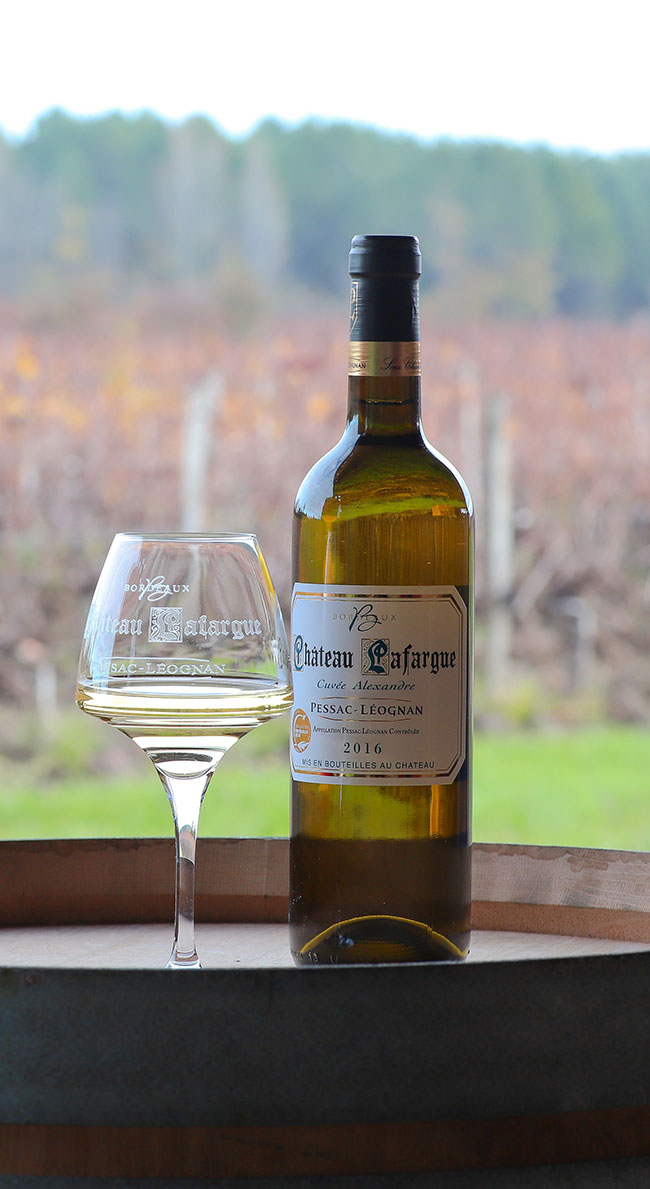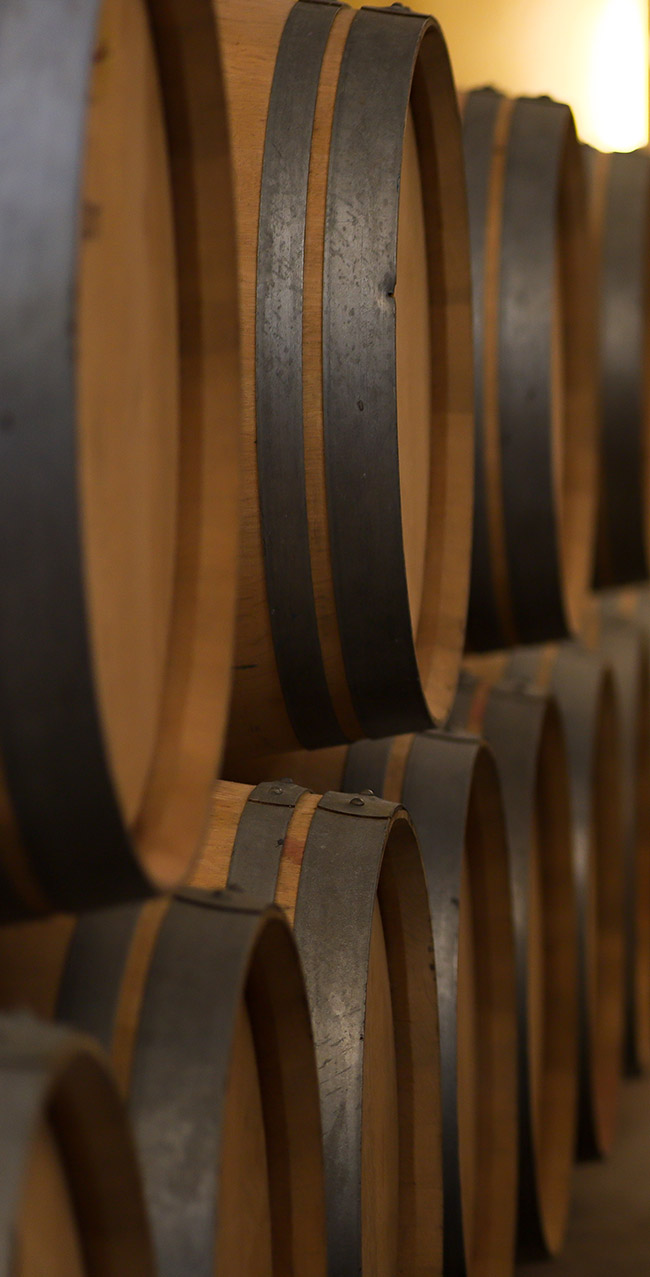Wine’s vinification
“To please, to rejoice, to move, not to weary…To reveal the inimitable genius of the source”.
To vinify is to guide the natural phenomenon of the transformation of grapes into wine, intervening as little as possible but skilfully, with a view to achieving the desired aesthetic objective.
Fermentation of red wines
For our red wines, the grapes are harvested mechanically and undergo selection on a sorting table. The berries then go directly into the vat for a 2 to 3 day pre-fermentation maceration.
This is followed by alcoholic fermentation for about ten days.
In this biochemical process, the sugar is transformed into alcohol by the action of saccharomyces yeasts.
These are naturally present on the grapes’ skins, and we also add some selected yeasts, at controlled temperatures.
Vinification method
During the entire process, from maceration to the end of alcoholic fermentation, a daily pumping over is carried out to enrich the wine with the tannins and anthocyanins as well as the flavours present in the skins and seeds.
Tannin: an organic substance present in the skin and seeds of the grape, which helps to preserve the wine.
Anthocyanins: pigments that give colour to wine.
The next stage is microoxygenation. . This stage lasts one to two weeks and aims to soften the tannins and obtain better stability of the colouring matter.
Malolactic fermentation
Aftre this, the wine is separated from the grape residues.
This is when malolactic fermentation occurs, transforming the malic acid from the grapes into lactic acid. The effect is not as dramatic as that of alcoholic fermentation. It enables a de-acidification and stabilization of the wine.
In Bordeaux, malolactic fermentation traditionally only concerns red wines.
Our Cuvée Traditionelle is aged for 12 months in French oak barrels.
For the Cuvée Prestige the ageing period is 16 to 18 months.
The winemaker “accompanies” this transformation.

Fermentation of white wines
For our white wines, the grapes are harvested manually, sometimes with successive rounds of picking, depending on the ripening conditions.
After de-stemming (separation of the grapes from the bunch), the juice and berries undergo skin maceration in vats at a low temperature. This takes place on the day of harvest and continues overnight.
In the morning, the juice is drained (separation of juice and residues) and placed in a cold room to settle (a natural clarification process).
The young Sauvignon Gris is treated differently and pressed immediately after harvesting to retain its freshness and acidity.
The juices are then kept for a few days at a temperature of 5-6 °C. This low-temperature holding period enables the must to develop more body.
Transfer to oak barrels
Next comes entonnage (transfer to barrels), and the addition of yeast for alcoholic fermentation. The must is stirred so that the lees are kept in suspension in the barrel, and the barrels are topped up to reduce oxidation.
These operations are carried out every day for two weeks, then every other day for one to two months, then once a week and finally once a month depending on how the wine tastes.
The wines remain in barrels for 9 to 10 months before being transferred to vats for the final blending.
Château Lafargue
Would you like to know more about our wines?
See our “Cuvées” page dedicated to our red wines and our exceptional white wine.

